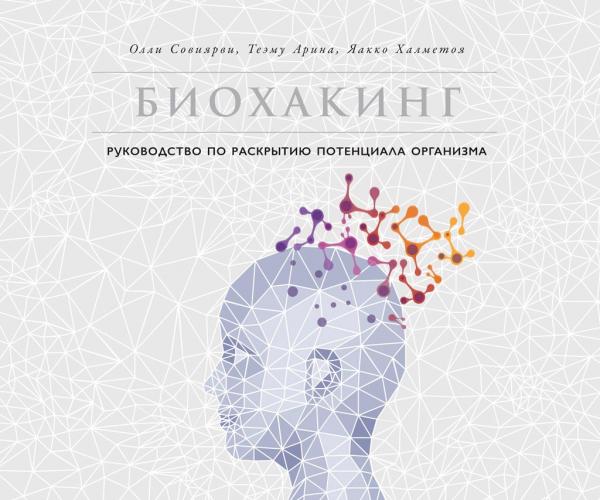77
Miller, T. & Wolin, M. (1996). Pathways of acetate, propionate, and butyrate formation by the human fecal microbial flora. Applied and Environmental Microbiology 62 (5): 1589–1592.
78
А также ряд других биологически активных веществ, в том числе и мелатонин. – Прим. науч. ред.
79
Bollinger, R. et al. (2007). Biofilms in the large bowel suggest an apparent function of the human vermiform appendix. Journal of Theoretical Biology 249 (4): 826–831. Review.
80
Im, G. et al. (2011). The appendix may protect against Clostridium difficile recurrence. Clinical Gastroenterology and Hepatology 9 (12): 1072–1077.
81
Vons, C. et al. (2011). Amoxicillin plus clavulanic acid versus appendicectomy for treatment of acute uncomplicated appendicitis: an open-label, non-inferiority, randomised controlled trial. The Lancet 377 (9777): 1573–1579.
82
Jussila, A. et al. (2013). High and increasing prevalence of inflammatory bowel disease in Finland with a clear North-South difference. Journal of Crohns & Colitis 7 (7): e256-262.
83
Hou, J. & Abraham, B. & El-Serag, H. (2011). Dietary intake and risk of developing inflammatory bowel disease: a systematic review of the literature. The American Journal of Gastroenterology 106 (4): 563-573. Review.
84
Среди исследователей нет единого мнения о значимости кишечной проницаемости для развития различных заболеваний. В настоящее время значимость синдрома leaky gut («дырявого кишечника») считается преувеличенной. – Прим. науч. ред.
85
Fasano, A. (2011). Leaky gut and autoimmune diseases. Clinical Reviews in Allergy and Immunology 42 (1): 71–78.
86
Olendzki, B. et al. (2014). An anti-inflammatory diet as treatment for inflammatory bowel disease: a case series report. Nutrition Journal 13: 5.
87
Drago, S. et al. (2006). Gliadin, zonulin and gut permeability: Effects on celiac and non-celiac intestinal mucosa and intestinal cell lines. Scandinavian Journal of Gastroenterology 41 (4): 408–419.
88
Festen, E. et al. (2011) A meta-analysis of genome-wide association scans identifies IL18RAP, PTPN2, TAGAP, and PUS10 as shared risk loci for Crohn’s disease and celiac disease. PLoS Genetics 7 (1): e1001283.
89
Herfarth, H. & Martin, C. & Sandler, R. & Kappelman, M. & Long M. D. (2014). Prevalence of a gluten-free diet and improvement of clinical symptoms in patients with inflammatory bowel diseases. Inflammatory Bowel Diseases 20 (7): 1194–1197.
90
Hall, J. (2010). Guyton and Hall Textbook of Medical Physiology. Philadelphia: Saunders.
91
European Association for the Study of Liver. (2012). EASL clinical practical guidelines: management of alcoholic liver disease. Journal of Hepatology 57(2): 399–420.
92
Chida, Y. & Sudo, N. & Kubo, C. (2006). Does stress exacerbate liver diseases? Journal of Gastroenterology and Hepatology 21 (1 Pt 2): 202–228. Review.
93
Milic, S. & Lulic, D. & Štimac, D. (2014). Non-alcoholic fatty liver disease and obesity: biochemical, metabolic and clinical presentations. World Journal of Gastroenterology 20 (28): 9330–9337.
94
Pandit, A. & Sachdeva, T. & Bafna, P. (2012). Drug-Induced Hepatotoxicity: A Review. Journal of Applied Pharmaceutical Science 02 (05): 233–243.
95
Pak, E. & Esrason, K. & Wu, V. (2004). Hepatotoxicity of herbal remedies: an emerging dilemma. Progress in Transplantation 14 (2): 91–96. Review.
96
Stahre, M. & Roeber, J. & Kanny, D. & Brewer, R. & Zhang, X. (2014). Contribution of excessive alcohol consumption to deaths and years of potential life lost in the United States. Preventing Chronic Diseases 11: E109.
97
Michalopoulos, G. (2007). Liver regeneration. Journal of Cellular Physiology 213 (2): 286–300. Review.
98
Grant, D. (1991). Detoxification pathways in the liver. Journal of Inherited Metabolic Disease 14 (4): 421–430. Review.
99
Ellis, H. (2011). Anatomy of the gallbladder and bile ducts. Surgery (Orford) 29 (12): 593–596.
100
Schmidt, D. et al. (2010). Regulation of bile acid synthesis by fat-soluble vitamins A and D. The Journal of Biological Chemistry 285 (19): 14486–14494.
101
Houten, S. & Watanabe, M. & Auwerx, J. (2006). Endocrine functions of bile acids. The EMBO Journal 25 (7): 1419–1425. Review.
102
Ikemoto, S. et al. (1997). Cholate inhibits high-fat diet-induced hyperglycemia and obesity with acyl-CoA synthetase mRNA decrease. American Journal of Physiology 273 (1 Pt 1): E37–45.
103
Hofmann, A. (1999). The continuing importance of bile acids in liver and intestinal disease. Archives of Internal Medicine 159 (22): 2647–2658. Review.
104
Для профилактики камнеообразования в медицине используют препараты урсодезоксихолевой кислоты. – Прим. науч. ред.
105
Walcher, T. et al. (2009). Vitamin C supplement use may protect against gallstones: an observational study on a randomly selected population. BMC Gastroenterology 9: 74.
106
Koppisetti, S. et al. (2008). Reactive oxygen species and the hypomotility of the gall bladder as targets for the treatment
